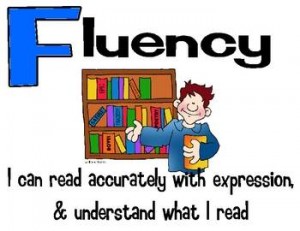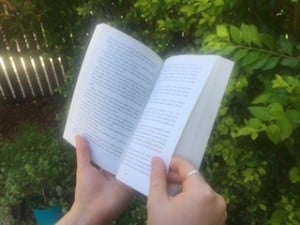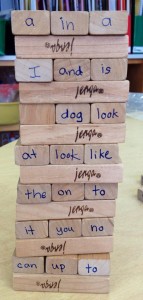Understanding the Reading Process – The Big Six
The next component that Konza identified as necessary for the teaching of reading is fluency. This blog will summarise her original paper and the supporting paper on fluency.
Fluency
 Fluency is the ability to read text accurately, quickly and with expression. Background knowledge of the text being read, rapid retrieval of relevant vocabulary and knowledge of syntax and grammatical forms assist students to predict upcoming vocabulary with accuracy and speed.
Fluency is the ability to read text accurately, quickly and with expression. Background knowledge of the text being read, rapid retrieval of relevant vocabulary and knowledge of syntax and grammatical forms assist students to predict upcoming vocabulary with accuracy and speed.
A student reaches a pivotal point in their reading development when they become fluent. It is the point where ‘learning to read’ changes to ‘reading to learn’. Fluency includes reading rate, appropriate phrasing and intonation. It is interesting my last blog looked at vocabulary and the symbiotic relationship of mutualism. An example of a symbiotic or co-dependent relationship is fluency and comprehension. If a reader is not fluent, the student will have difficulty comprehending and a reader can only read fluently if comprehension is occurring.
If a student is reading slowly and with many pauses, attention will be focused on decoding and word recognition. To comprehend, a reader needs to be reading 90-100 words a minute which usually develops by the end of year 2 for simple text.
Fluency emerges from extensive practice of independent level text (Konza, 2011). Children who need to practise more often don’t because it is difficult and labour-intensive. They need extended practice reading easily decodable texts – ones that have a controlled vocabulary, allowing students to read a whole book and to develop confidence, fluency and automaticity.
Struggling readers will not develop fluency without practice at their independent level. For older struggling readers, there are now many titles that match their interests but have simple vocabulary and repetition of target words. Reading aloud to these students and engaging in oral language and word consciousness will help to develop the necessary advanced language structures and vocabulary.
An interesting caveat from Konza’s paper is the research found around the use of Uninterrupted Sustained Silent Reading (USSR). The National Reading Panel found little evidence of this practice supporting the improvement of fluency and comprehension for poorer readers. It is suggested that this time would be better spent assisting these students to develop the component reading skills.
As I mentioned in a previous blog, I personally do see value in USSSR as it allows time for independent reading. As the teacher however, I take the opportunity to sit beside individual students. I am able to listen to individual reading, collect a quick running record and to ask questions about their reading and the text.
Konza’s supporting paper on the reading component of fluency has a number of interesting sections. It includes elaborations on the three core components of fluency: accuracy; rapid rate of reading; and prosody (reading with expression). It has a table reflecting the average rates of reading in the primary years and a description of how to calculate fluency, along with a fluency scale.
Strategies
Konza mentions a number of strategies that assist in the development of fluency.  These include:
These include:
- Modelling fluency in read alouds.
- Letter fluency exercises.
- Sight word building through word wall activities.
- Explicit teaching of punctuation.
- Choral reading.
- Repeated readings.
- Echo reading.
- Paired reading.
- Poetry reading.
- Song rereading.
- Readers’ Theatre.
- Dialogues an monologues from plays.
- Partner reading.
- Partner reading with graphing.
- Read along books with CD.
- Wide independent reading.
Achievement of fluency is the mastery of the components skills whereby a reader can focus on gaining meaning – a cause for celebration.



 Phonics is understanding there is a relationship between the individual sounds (phonemes) of spoken language and the letters (graphemes) of written language. Once children understand that word can be broken up into a series of sounds, they need to learn the relationship between those sounds and letters – ‘the alphabetic code’ or the system that the English language uses to map sounds onto paper (Konza, 2011).
Phonics is understanding there is a relationship between the individual sounds (phonemes) of spoken language and the letters (graphemes) of written language. Once children understand that word can be broken up into a series of sounds, they need to learn the relationship between those sounds and letters – ‘the alphabetic code’ or the system that the English language uses to map sounds onto paper (Konza, 2011).  Sight words need to be taught explicitly and systematically, followed by regular practise in context.
Sight words need to be taught explicitly and systematically, followed by regular practise in context.